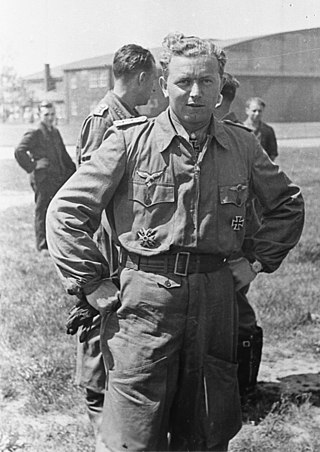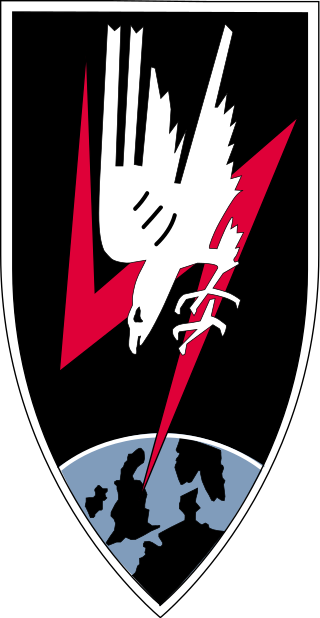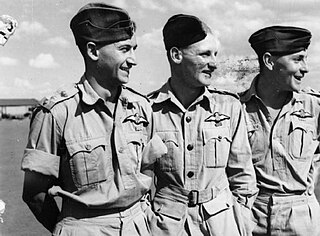Related Research Articles

The Curtiss P-40 Warhawk is an American single-engined, single-seat, all-metal fighter-bomber that first flew in 1938. The P-40 design was a modification of the previous Curtiss P-36 Hawk which reduced development time and enabled a rapid entry into production and operational service. The Warhawk was used by most Allied powers during World War II, and remained in frontline service until the end of the war. It was the third most-produced American fighter of World War II, after the North American P-51 Mustang and Republic P-47 Thunderbolt; by November 1944, when production of the P-40 ceased, 13,738 had been built, all at Curtiss-Wright Corporation's main production facilities in Buffalo, New York.

A flying ace, fighter ace or air ace is a military aviator credited with shooting down five or more enemy aircraft during aerial combat. The exact number of aerial victories required to officially qualify as an ace is varied but is usually considered to be five or more.

1 Squadron SAAF was an air force squadron of the South African Air Force and was formed at Air Force Station Swartkop in February 1920, equipped with De Havilland DH.9s part of the Imperial Gift donation to South Africa by Britain. On 31 August 1939 the squadron was re-designated as 1 Bomber/Fighter Squadron and this was then changed to 11 (Bomber) Squadron in December 1939. The squadron was resurrected in February 1940 by the renumbering of 6 Squadron, equipped with four Hurricane Mk 1s and six Furies.

The 4th Fighter Group was an American element of the United States Army Air Forces (USAAF) Eighth Air Force during World War II. The group was known as the Debden Eagles because it was created from the three Eagle Squadrons of the Royal Air Force: No. 71, No. 121 Squadron RAF, and No. 133 Squadron RAF. These squadrons became the 334th, 335th, and 336th Fighter Squadrons of the 4th Fighter Group based at RAF Debden. The group was the first fighter group to fly combat missions over German airspace, the first to escort bombers over Berlin, and the first selected to escort bombers on shuttle bombing runs landing in Russia. The group was credited with shooting down 1,016 German planes.

Werner Mölders was a World War II German Luftwaffe pilot, wing commander, and the leading German fighter ace in the Spanish Civil War. He became the first pilot in aviation history to shoot down 100 enemy aircraft and was highly decorated for his achievements. Mölders developed fighter tactics that led to the finger-four formation. He died in a plane crash as a passenger.

Werner Georg Emil Lucas was a German Luftwaffe military aviator during World War II, a fighter ace credited with 106 enemy aircraft shot down. The majority of his victories were claimed over the Eastern Front, with one claim over the Western Front.

Jagdgeschwader 77 Herz As was a Luftwaffe fighter wing during World War II. It served in all the German theaters of war, from Western Europe to the Eastern Front, and from the high north in Norway to the Mediterranean.

Martin Drewes was a German Luftwaffe military aviator and night fighter ace during World War II. He was credited with 52 victories of which 43 were claimed at night whilst flying variants of the Messerschmitt Bf 110 heavy fighter. The majority of his victories were claimed over the Western Front in Defence of the Reich missions against the Royal Air Force's Bomber Command.
No. 48 Squadron was a Royal Air Force squadron that saw service in both the First and Second World Wars.

Walter "Gulle" Oesau was a German fighter pilot during World War II. A fighter ace, he served in the Luftwaffe from 1934 until his death in 1944. He rose to command Jagdgeschwader 1, which was named in his honor after his death.

Nachtjagdgeschwader 3 was a Luftwaffe night fighter-wing of World War II. NJG 3 was formed on 29 September 1941 in Stade from Stab./Zerstörergeschwader 26. Pilots of NJG 3 claimed approximately 820 aerial victories by day and night.

Egmont Prinz zur Lippe-Weißenfeld was a Luftwaffe night fighter flying ace of royal descent during World War II. A flying ace or fighter ace is a military aviator credited with shooting down five or more enemy aircraft during aerial combat. Prinz zur Lippe-Weißenfeld was credited with 51 aerial victories, all of them claimed in nocturnal combat missions.

Peter Jeffrey, was a senior officer and fighter ace in the Royal Australian Air Force (RAAF). Born in Tenterfield, New South Wales, he joined the RAAF active reserve in 1934, and transferred to the Permanent Air Force (PAF) shortly before World War II. Posted to the Middle East in July 1940, Jeffrey saw action with No. 3 Squadron and took command of the unit the following year, earning the Distinguished Flying Cross for his energy and fighting skills. He was appointed wing leader of No. 234 Wing RAF in November 1941, and became an ace the same month with his fifth solo victory. The next month he was awarded the Distinguished Service Order for his achievements, which included rescuing a fellow pilot who had crash landed in the desert.

4 Squadron SAAF was a South African Air Force unit which served during World War II.

Alan Charles Rawlinson, was an Australian airman who became a fighter ace in World War II. He was credited with at least eight aerial victories, as well as two aircraft probably destroyed, and another eight damaged.

Servaas van Breda Theron was a South African World War II fighter ace, credited with 10 'kills'.

Laurence 'Laurie' Wilmot was a South African flying ace of World War II, credited with 4 'kills'.
References
- ↑ Shores, C; Williams C (15 July 2008). Aces High: A Tribute to the Most Notable Fighter Pilots. Grub Street. ISBN 978-1-898697-00-8.
- ↑ Thomas, Andrew (2003). Hurricane Aces 1941 -1945. Osprey. p. 51. ISBN 978-1841766102.